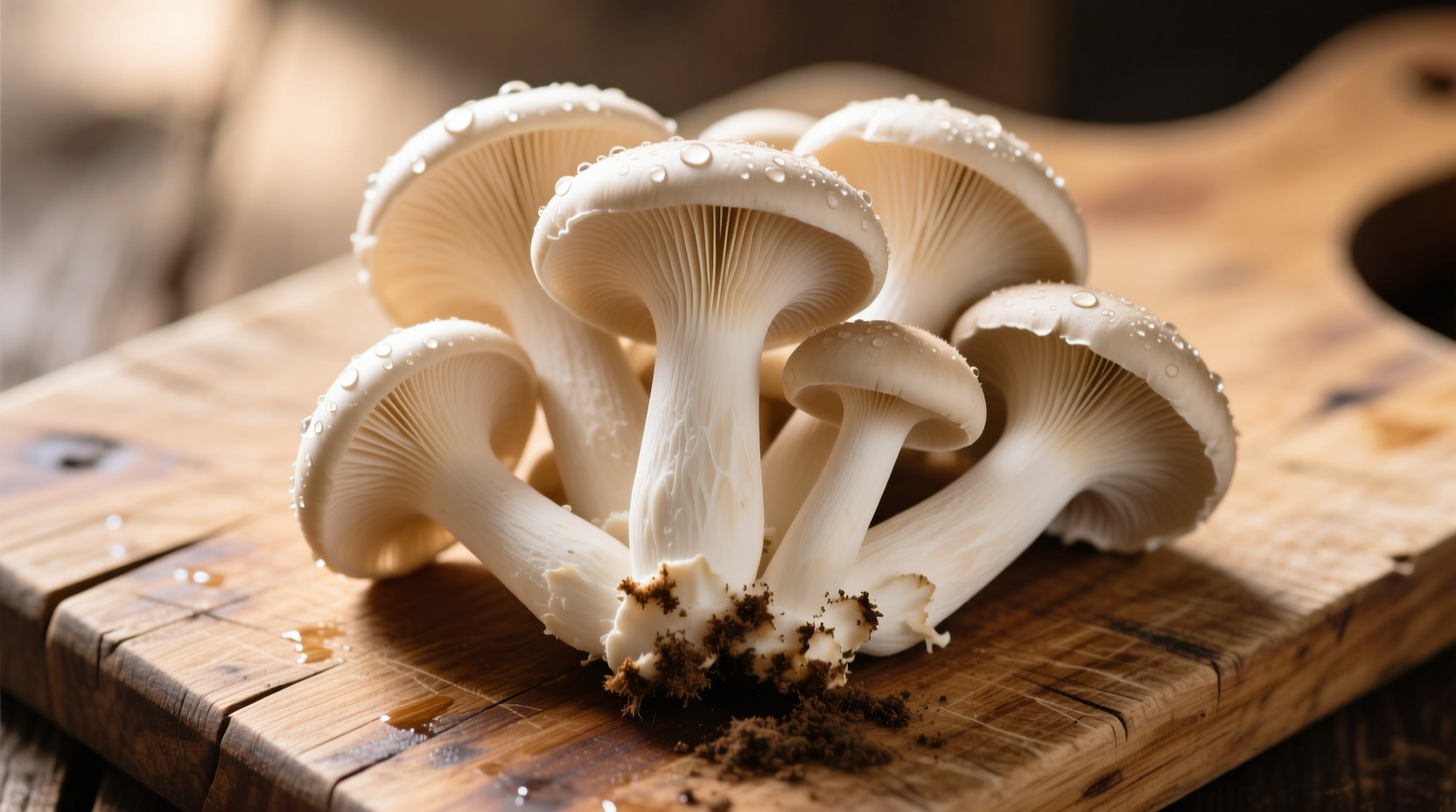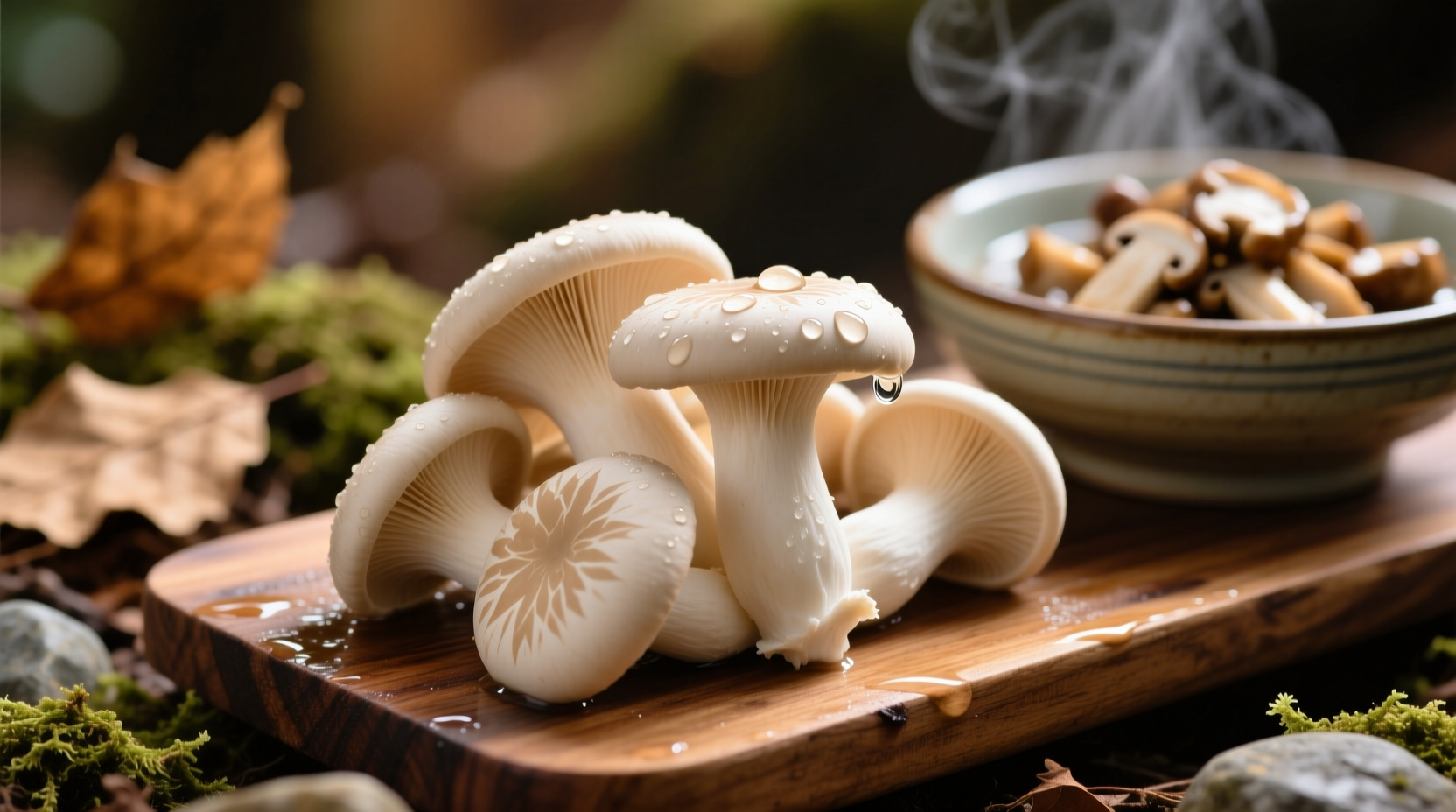Curious about what oyster mushrooms taste like? You're not alone. As one of the most versatile edible fungi, oyster mushrooms offer a unique flavor experience that's captured the attention of home cooks and professional chefs alike. In this guide, you'll discover exactly what to expect from their taste profile, how different cooking methods transform their flavor, and why they've become a staple in kitchens worldwide.
Understanding the Basic Flavor Profile
When you first bite into a fresh oyster mushroom, you'll notice a surprisingly mild flavor that's distinctly different from button or portobello mushrooms. Their taste can be described as:
- Sweetness - A delicate natural sweetness reminiscent of shellfish (hence the name)
- Umami - Subtle savory notes that enhance other ingredients
- Anise undertones - A faint licorice-like aroma in some varieties
- Earthy - Mild earthiness without the strong mushroom flavor of shiitake
Unlike stronger mushrooms that dominate a dish, oyster mushrooms play well with others. They absorb surrounding flavors while contributing their own nuanced profile. This makes them perfect for beginners exploring mushroom varieties or chefs seeking versatile ingredients.
Texture: The Secret to Their Culinary Success
Texture plays a crucial role in what oyster mushrooms taste like. Fresh specimens offer:
- A velvety, almost silky mouthfeel when properly cooked
- A slight chewiness that mimics meat without being tough
- Delicate fronds that separate easily when cooked
- No rubbery or woody elements found in some other varieties
Proper cooking technique is essential. Overcooking turns them mushy, while undercooking leaves an unpleasant raw texture. The sweet spot? Searing for 3-5 minutes until golden edges develop.
Cooking Methods That Transform Flavor
How you prepare oyster mushrooms dramatically affects their taste profile. Understanding these context boundaries helps you achieve your desired flavor:
- Dry-searing - Creates Maillard reaction for deeper umami and bacon-like qualities
- Steaming - Preserves delicate sweetness but reduces umami development
- Stir-frying - Absorbs sauce flavors while maintaining texture
- Raw applications - Only suitable for very young specimens; offers crisp texture with mild flavor
Food science research from Cornell University's Department of Food Science confirms that high-heat cooking triggers enzymatic reactions that enhance oyster mushrooms' natural glutamates, creating that desirable umami boost. This explains why properly cooked specimens often surprise people with their meaty depth.
| Mushroom Variety | Flavor Profile | Best Cooking Method | Texture Characteristics |
|---|---|---|---|
| Gray Oyster | Mild, sweet, subtle anise | Searing, stir-frying | Tender with slight chew |
| Blue Oyster | Earthy, slightly stronger | Quick sauté | Firm texture holds shape |
| Golden Oyster | Buttery, nutty notes | Light sauté, raw in salads | Delicate, melts when overcooked |
| Pink Oyster | Strongest flavor, seafood-like | Quick cooking, pickling | Very tender, cooks rapidly |
Varietal Differences: Not All Oyster Mushrooms Taste the Same
Many people don't realize that "oyster mushroom" refers to multiple varieties with distinct flavor profiles. Understanding these differences helps you select the right type for your culinary goals:
Gray Oyster Mushrooms - The most common variety offers the classic mild, sweet profile with subtle anise notes. Perfect for beginners exploring what do oyster mushrooms taste like in everyday cooking.
Blue Oyster Mushrooms - Slightly earthier with more pronounced umami. Their color fades when cooked, but they maintain better texture for heartier dishes. Great for what oyster mushrooms taste like when substituting for meat.
Golden Oyster Mushrooms - Delicate buttery flavor with nutty undertones. These cook faster and offer the most subtle taste, making them ideal for what oyster mushrooms taste like in raw applications or delicate sauces.
Pink Oyster Mushrooms - The most distinctive variety with stronger seafood-like notes. They cook very quickly and offer the most pronounced flavor, perfect when you want what oyster mushrooms taste like to stand out in a dish.
Practical Cooking Tips for Best Flavor
Maximize your oyster mushroom experience with these chef-tested techniques:
- Clean properly - Wipe with damp cloth rather than washing to prevent water absorption
- Cook hot and fast - High heat creates desirable caramelization without sogginess
- Add salt late - Salt too early draws out moisture and prevents proper searing
- Pair strategically - Complements garlic, thyme, soy sauce, and citrus flavors
- Avoid overcrowding - Cook in batches for proper browning and texture development
Professional chefs often describe the ideal cooked oyster mushroom as having "the texture of scallops with the flavor of umami-rich bacon." This unique combination explains their growing popularity in both vegetarian and meat-centric dishes.

How Freshness Affects Flavor
The taste of oyster mushrooms changes significantly based on freshness. Understanding this timeline helps you maximize flavor:
- Day of harvest - Crisp texture, mild sweetness, no earthiness
- 2-3 days post-harvest - Optimal flavor development, subtle umami notes emerge
- 4-5 days - Texture begins softening, earthiness increases
- 6+ days - Potential bitterness develops, texture becomes slimy
According to agricultural research from Penn State Extension, oyster mushrooms continue enzymatic activity after harvest that enhances their flavor compounds for the first 72 hours. This explains why properly stored specimens often taste better on day two than the day they're purchased.
Common Flavor Misconceptions
Several myths persist about what oyster mushrooms taste like. Let's clarify:
- "They taste like oysters" - While they share a similar delicate sweetness, the comparison is more about texture than identical flavor
- "All mushrooms taste the same" - Oyster varieties offer distinctly milder flavor than shiitake or portobello
- "They taste fishy" - Properly cooked specimens have no fishy notes; this misconception comes from overripe specimens
- "They need strong seasoning" - Their delicate flavor actually shines with minimal seasoning
When exploring what do oyster mushrooms taste like compared to shiitake, the difference is significant. Shiitakes offer robust, earthy notes that dominate dishes, while oysters provide subtle enhancement without overwhelming other ingredients.
Storage Tips for Maximum Flavor Preservation
Proper storage maintains the delicate flavor profile that makes oyster mushrooms special:
- Store in paper bags, not plastic (plastic traps moisture causing faster deterioration)
- Keep in the main compartment of your refrigerator, not the crisper drawer
- Consume within 5 days for optimal flavor and texture
- Never wash until ready to use (moisture accelerates spoilage)
For longer storage, quick-freezing after blanching preserves flavor better than fresh storage beyond 5 days. Frozen oyster mushrooms work well in soups and stews where texture matters less than flavor.
Why Chefs Love Oyster Mushrooms
Professional kitchens increasingly feature oyster mushrooms because they solve multiple culinary challenges:
- They provide meaty texture for vegetarian dishes without artificial substitutes
- Their mild flavor works across global cuisines from Asian stir-fries to Italian pasta
- They cook quickly, making them ideal for time-sensitive restaurant service
- They offer visual appeal with their distinctive ruffled appearance
- They're affordable compared to many specialty mushrooms
Understanding what oyster mushrooms taste like helps explain their culinary versatility. Whether you're exploring plant-based cooking or simply looking to expand your flavor repertoire, these mushrooms offer a gateway to more complex and satisfying dishes.











 浙公网安备
33010002000092号
浙公网安备
33010002000092号 浙B2-20120091-4
浙B2-20120091-4